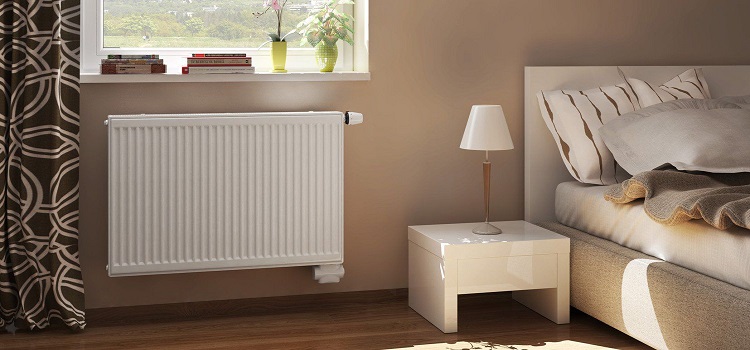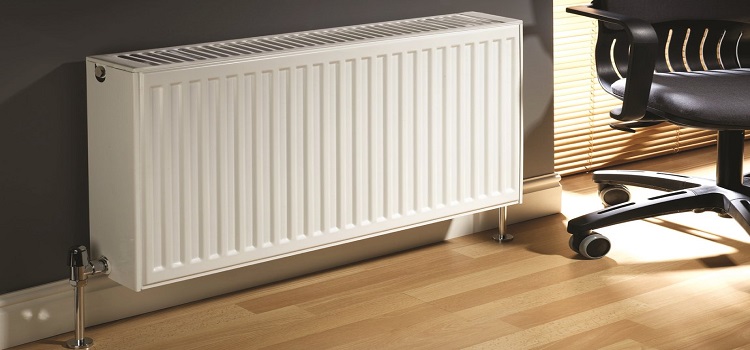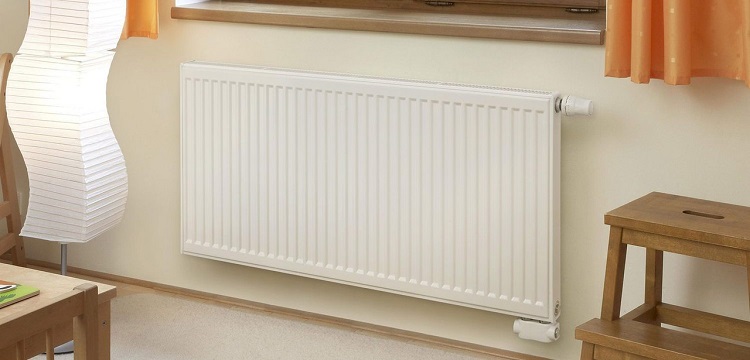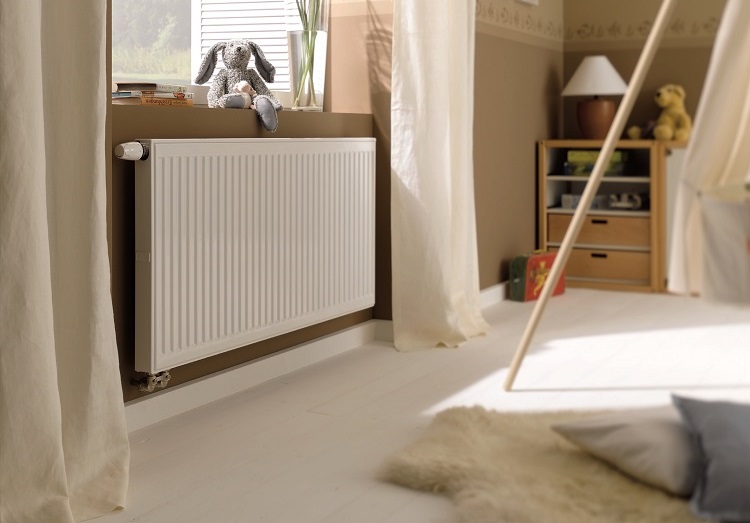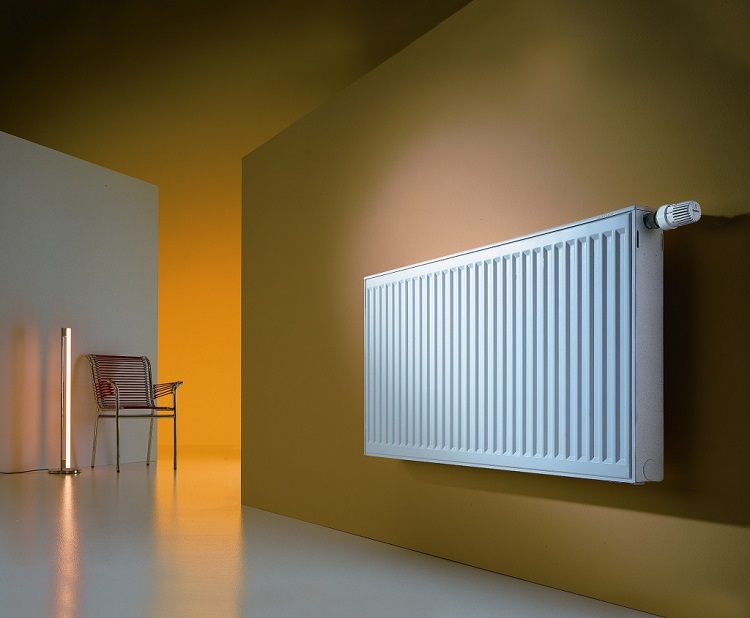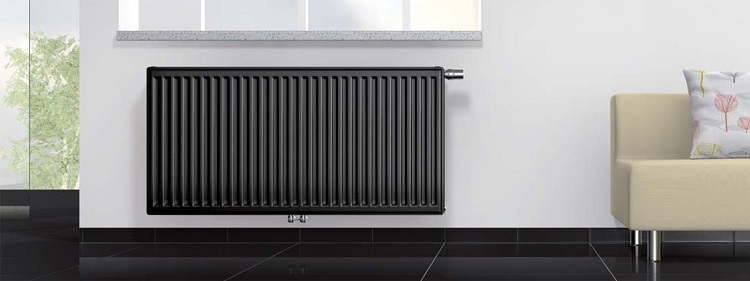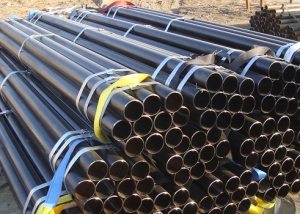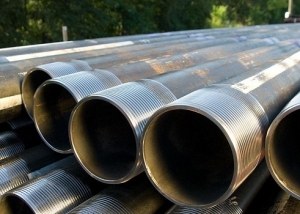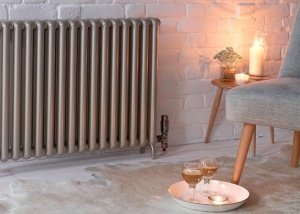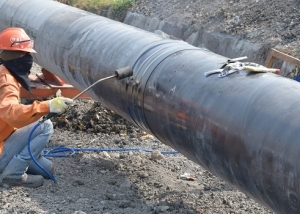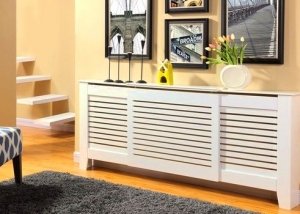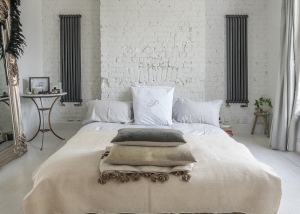The strength and durability of the product largely depend on the material. These and other factors take into account when choosing steel radiators. This is a relatively new product for Russian consumers, accustomed to cast-iron counterparts, in many homes that have already exhausted their resources. Which heating equipment to choose is an urgent issue for those who are engaged in repair or who are not satisfied with old batteries.
Content
Design features of steel heating blocks
Under a heating radiator is meant a compact metal product with a sectional or solid body, through which the coolant circulated from the common system circulates. The structure of different models is not significantly different, which affects the power or thermal efficiency, respectively, and the efficiency of all thermal equipment. In this regard, steel radiators are considered optimal in terms of price / quality ratio.
Some radiators in their design look quite simple - like vertical tubes for running hot water. Other batteries have special heating panels with convection fins to create a thermal swirl. Depending on the model, the number of panels varies from 1 to 3, built in parallel. Such a constructive device is possible only in the best steel heating radiators, due to the properties of ductile and durable stainless metal.
Consider the design differences of the batteries:
- Panel. Rectangular one-piece heating blocks hide a steel pipe with circulating steam, hot water or antifreeze. They are available in different widths, heights and depths, thanks to which the optimum power for a particular room is selected.
- Tubular. Welded into a common block, pipes connected by a common collector are arranged in parallel. High heat transfer area, more expensive than other steel counterparts, are available in different color variations.
- Sectional. Available in separate sections, which are easy to connect, so they can be extended in length to increase heat output.
Important! When replacing pipes and or batteries, one type of heating element is chosen, regardless of whether it is connected to a closed circuit with a boiler or a city communications scheme.
The general principle of heat supply has not changed for decades, but the range of radiators is annually updated with new developments. The elite category includes some tubular models with imperceptible matching of parts, mainly of foreign manufacture. They remind me of old cast-iron “accordions”, but without ribs, with an improved design and high efficiency.
Steel panel radiators
A single-row steel panel radiator is the most common type in Russia and in the territory of the former Soviet Union. Rectangular constructions, consisting of metal plates, cover the base - a pipe for passing the coolant.
If you look in the middle, there are often U-shaped ribs made of sheet steel, enhancing the effect of convection. Heating panels are not just a stamping of a certain shape, it is caused by the movement of air masses rising from the battery. This is the best way to increase heat transfer, saving on the thickness of steel elements.
There are several types of steel batteries with different numbers of internal panels:
- Model 10 - a budget option, a flat panel without the effect of convection and an additional facing panel, heating the air in the usual contact way.
- Model 11 is another inexpensive option from tubes and a shield, with minimal convection without an upper grill.
- Model 20 - a simple two-row, equipped with a grill that allows warm air to pass through.
- Model 21 inside is equipped with convector ribs on one panel under the casing.
- Model 22 - steel panel radiator on two convector panels with fins with a casing.
- Model 30 - the simplest three-row base, closed with a grill.
- Model 33 - the most advanced, under the casing, equipped with 3 convector fins, has the highest heat transfer.
As an example, the table shows the comparative characteristics of radiators of type 22 with sizes 500x500 from different manufacturers.
Table 1
| Mark | Working pressure (atm) | Max carrier temperature, degrees | Power, W (at 70 degrees) | Volume | Weight | Connection |
| Kermi (Germany) | 10 | 110 | 965 | 2,7 | 17,07 | Side., (Internal 4x1 / 2) |
| Buderus (Germany) | 10 | 120 | 913 | 3,15 | 14,1 | Side / bottom |
| Korado (Czech Republic) | 10 | 110 | 914 | 2 | 15,6 | Side - 4x1 / 2 inside / bottom - 2x3 / 4 outside. |
| Delonghi (Italy) | 8,7 | 110 | 1079 | 3,1 | 14,9 | Side - 4x1 / 2 / bottom -2x1, / 2 |
Recommendations for the operation of steel panel radiators
Thin steel warms up quickly enough, easily transfers heat to the environment and cools down soon. Due to these properties and the sufficient power of steel panel radiators, these inexpensive products are often chosen as the main source of heat in the private sector.
Important! Only the highest quality models, such as the German “Kermi” or the Russian panel RSV-1-2-K (Konrad) are adapted for urban heating systems. Budget thin-walled models on 1 panel can not withstand water hammer up to 10 baR.
If you dig into the essence of the issue of clogged batteries with rust, then there are no guarantees. Although “stainless steel” and “protective coating” are indicated in any technical description, this works temporarily, at the initial stage.
Not a single foreign manufacturer has yet succeeded in introducing know-how that will completely rid the system of rust and calcium scale with organic sediment. The maximum that can be done is to achieve a high power flow coolant under pressure from a pump in a closed circuit.
When installing the radiator, it is recommended to comply with the requirements for observing the horizontal (level mark) and vertical (plumb or universal construction tool). This minimizes clogging and airing of “stagnant” corners of the heating system.
Note! Steel heaters are lightweight and compact in shape, operate with a coolant heated to + 110 ° C. There is the possibility of adjusting the temperature indicator with temperature changes. Therefore, they are often chosen for installation in places where there is no window sill in the private sector.
The main advantages and disadvantages of steel batteries
Each model has its own advantages, but you can list the main positive characteristics:
- universal design with heat-resistant enamels or powder coating, easily fit into any interior;
- good heat transfer with low inertia (slowly cool down);
- flat models take up little space, it is easy to attach to any place in the living room without a window sill;
- high efficiency due to price and energy-saving equipment with thermal control;
- a small mass of products allows you to mount them even on wall panels;
- a large selection of format and types of eyeliner to the system (connected via a diagonal, side, bottom connection);
- products come with a complete set, including a temperature controller;
- good level of efficiency, due to the successful combination of convector and radiator characteristics in one unit;
- average life at the lowest price;
- ease of installation and replacement due to its light weight and the absence of complex connectors;
- minimum cost relative to other materials.
There are not many shortcomings, not to mention the fact that they are more adapted to the closed loop of the private sector. Noticeable cons:
- It is not recommended to install in central heating systems with high pressure and water hammer tests;
- gradual formation of a corrosion layer and calcium plaque, especially at a high coolant temperature;
- there is no possibility of building up the unit to increase power;
- sensitivity to filler with a large deviation in acid-base environment and oxygen content;
- short life of low-cost models with one panel.
Batteries of this type, if the thermal output is selected incorrectly, cannot be increased. In this case, you will have to add another panel unit and temporarily duplicate the insulation in another way - this is an SPLIT system or an oil cooler that works from the network. The second option is to completely change the batteries as they wear out, taking into account the subsequent increase in the size and number of convection parts.
Recommendations for choosing radiators from steel blocks
Steel radiators do not always successfully compete in the global thermal equipment market. But they are quite in demand, thanks to a successful design and affordable price. In construction supermarkets and specialized retail outlets, steel radiators of domestic and foreign manufacturers in different price segments are presented. Their cost is based on various components:
- manufacturing material (high-carbon alloy steel is more expensive);
- type of radiator (tubular, sectional or panel versions);
- a variety of batteries (1-, 2-, 3-row with the presence of convection ribs);
- brand or country of origin;
- format (high and low, deep and flat, compact and long models);
- place of sale of batteries (via the Internet, a specialized store, an expensive shopping center in the capital or a regular building materials store on the periphery);
- design features and design specifics;
- technical parameters, including heat transfer.
The final price is the total indicator, so it is important to focus on your needs, features of the room and financial capabilities. Samples with the same price tag can vary significantly in size, design features and manufacturers.
The logical question is, what are the best steel radiators? German or Italian, Polish or Czech, Chinese or South Korean, Russian or Belarusian? Judging by the reviews, products of different brands have proven themselves in the domestic market:
- German Kermi (with increased heat transfer with coolant circulation on the front panel);
- Finnish Purmo (with double staining, internal coating of containers, built-in air exhaust);
- Czech Korado (thin-sheet models of two panels, there are practical versions that are completely smooth on the outside);
- Belarusian “Lidea” compete with the Russian “Konrad” and Prado in all respects (they are inferior to foreign ones in price, but are well adapted to low-quality coolant).
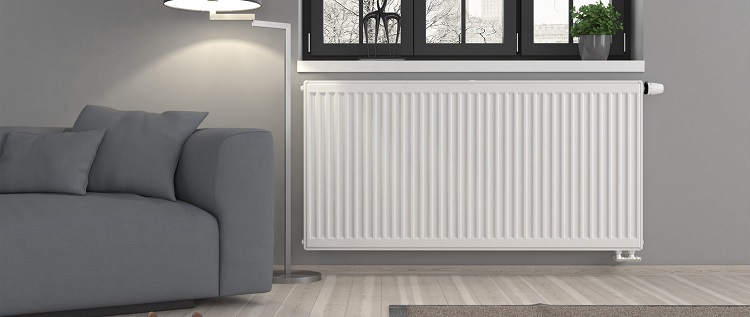
A steel heating radiator is a high profitability, ease of installation and a good level of efficiency
It is possible to adapt imported and domestic samples to Russian realities by choosing according to the described characteristics. It is also important to focus on the amount of air circulating in the room. In order not to make a mistake with the dimensions and thermal power, it is important to take into account the indicators indicated in the documentation.
